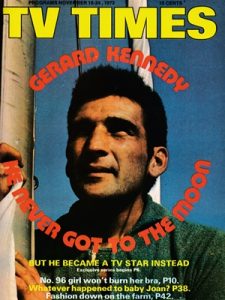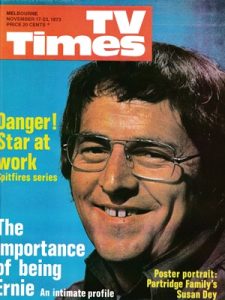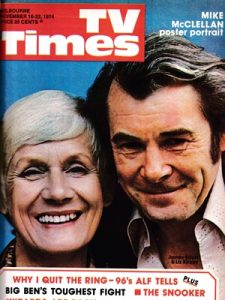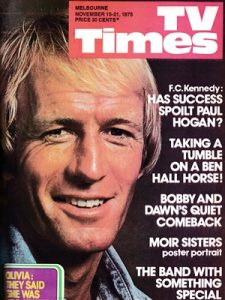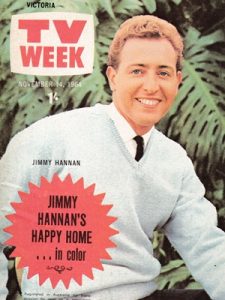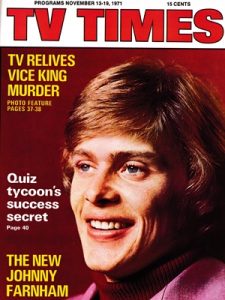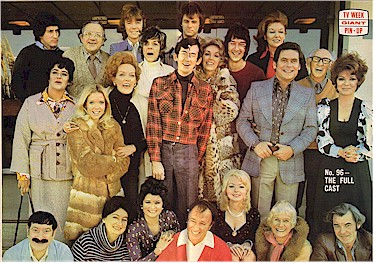
On Monday 13 March 1972 the first episode screened of a new drama series that was to change the face of Australian TV. On that night, Sydney’s TEN10 screened episode one of Number 96 (Melbourne’s ATV0 followed the next night, and other states later).
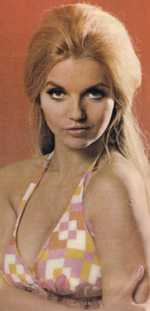
Produced by Don Cash and Bill Harmon with script writer David Sale, the series was a desperate attempt by the debt-ridden 0-10 Network to combat the long-held dominance of the older Seven and Nine networks, and hopefully provide some financial relief for the network’s owners. The night of the first episode became known as ‘the night Australian television lost its virginity’.
Set in a fictional apartment block in Sydney, Number 96 told the never-before-seen stories of life in suburban Australia. Anything that was considered too hot, or taboo, up until then was suddenly thrust onto Australia’s black and white TV screens – sexual relations, infidelity, nudity, racism, homosexuality, drugs – it was all there, five nights a week at 8.30pm. The series also created Australia’s first ‘sex symbol’ with the character Bev Houghton, initially played by the actress known simply as Abigail, who would display ample amounts of flesh or often wear revealing or see-through attire – but despite the reputation that she carried for years to come, she never completely disrobed on camera.
But the appeal of 96 was not just in its raunchiness – the mix of drama with comedy was also what made it so widely appealing. Despite its largely ‘adult’ content, at one point the series was the number 1 rated show with children aged 5 to 12. TV writers constantly criticised the show and the censors monitored its every move, but the viewers loved it.
96 was the first major Australian TV soap. Up until then the only local soap operas were some daytime dramas in the 1960s and ABC’s innocent rural drama Bellbird (1967-77). And it was an instant success — with Number 96 screening five nights a week, Sydney’s TEN10 recorded an instant boost to their overall prime time ratings after the show’s first week and by 1973 the once-ailing 0-10 Network was not only making a profit for the first time but it had become Australia’s #1 television network.
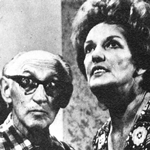
The characters that lived at Number 96 became instant cult heroes including – but certainly not limited to – the gossiping Dorrie Evans (Pat McDonald) and hen-pecked husband Herbert (Ron Shand) and their flatmate Flo Patterson (Bunney Brooke), English battlers Alf and Lucy Sutcliffe (James Elliott and Elisabeth Kirkby), the bumbling Arnold Feather (Jeff Kevin) and sensitive lawyer Don Finlayson (Joe Hasham).
The character of Don Finlayson was significant as he was the first gay character to be portrayed in an ongoing role on TV – and more importantly was far removed from the traditional effeminate male stereotype – and whose sexuality was not treated as a subject of gossip or derision among the other tenants.
The popularity of the characters was made evident when all the actors travelled by train from Sydney to Melbourne to a TV Week Logie Awards presentation and were met at stops along the way by crowds of dedicated fans and when they arrived at Melbourne’s Spencer Street station they were greeted by crowds not seen in the city since The Beatles came to town a decade earlier.
The cliffhanger aspect was also a major drawcard in the show’s popularity. Major cliffhangers such as the ‘knicker snatcher’, the ‘pantyhose strangler’ and the ‘hooded rapist’ kept viewers captivated for weeks at a time and ultimately set the pace for future soapies on Australian TV.
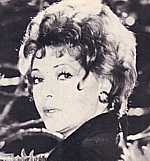
In 1974, Number 96 The Movie was produced and screened to packed cinemas – giving viewers a change to see the apartment block and its characters in colour. The movie was produced over the 1973-74 summer break on a miniscule budget and was a stand-alone narrative featuring all of the show’s regular characters and, unrestricted by the confines of TV censorship restrictions, featured plenty of nudity (mostly from actress Rebecca Gilling), while a kiss between Don Finlayson (Joe Hasham) and Simon Carr (John Orcsik) was left on the cutting room floor.
Also in 1974 the success of 96 had led to a similarly controversial soap opera drama, The Box, which was produced by Crawford Productions and Melbourne’s ATV0, and screened back-to-back with 96. Both shows ended the year 1974 as the most popular programs on Australian TV.
Production of Number 96 had switched from black and white to colour from late 1974 but would not go to air in colour on a regular basis until the official changeover to colour transmission in March 1975, and by then 96 was showing signs of fading popularity. It was then that producers came up with their biggest storyline yet — a bomb blast to rock the apartment building and wipe out four characters — of which whose identity was not known until the next episode the following week – Aldo and Roma Godolfus (Johnny Lockwood and Philippa Baker), Les Whittaker (Gordon McDougall) and Miles Cooper (Scott Lambert). The cliffhanger worked to some extent in boosting the show’s popularity, but only briefly.
Fearing the show’s eventual demise, producer Bill Harmon (co-producer Don Cash had passed passed away in 1973) created a number of spin-off projects from 96 featuring some of the show’s original cast members but none were to be picked up by the networks.
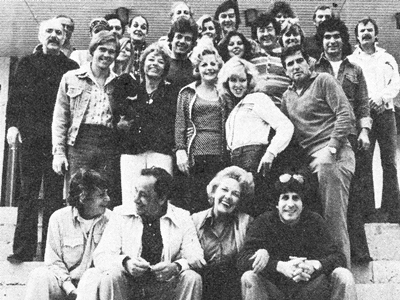
By 1977, both Number 96 and The Box had run out of steam. Producers went back to using shock tactics such as sex and nudity to try and regain popularity, however it was mostly to little effect. Appearances of female full frontal nudity in the show’s dying days raised barely a murmur among the public — a far cry from five years earlier when less provocative scenes would have the network inundated with irate callers. Audiences had now taken to ‘family’ dramas like The Sullivans.
After 1218 episodes, a movie spin-off and having won numerous awards (including several Logies for Best Drama and a Gold Logie for Pat McDonald), the final episode of Number 96 screened in late 1977. It became the longest running soap opera on Australian television until being overtaken by The Young Doctors in 1982. Don Finlayson and Dorrie and Herb Evans were the only characters to survive the distance from the very first episode. With the success of Number 96 behind him, Bill Harmon was approached by 0-10 again in 1979 to put together Arcade, the network’s new early evening soap to begin screening in 1980. Although Arcade featured some of the popular elements of 96, particularly the emphasis on comedy, it was a dismal failure.
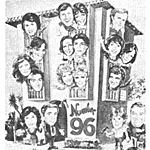
Having envied the success of Number 96 in Australia, the NBC network in the US put together their own version, using the same title, in 1980-81. The American version was not a success, having been far tamer compared to the controversial Australian original, and was off the air after a handful of episodes.
In 1990, Network Ten was in financial and ratings decline and executives even considered making a Nineties version of Number 96 with a mix of new characters and some from the 1970s original. The plan did not eventuate though in 1991 the Nine Network tried to emulate the controversy of Number 96 with a new soap opera, Chances.
In the early 1990s the only known surviving copy of Number 96 The Movie surfaced at the National Film And Sound Archive. The movie then enjoyed repeat screenings in some independent cinemas and was replayed on Network Ten nationally in November 1996.
Though master copies of many Number 96 episodes were destroyed — particularly those made in black and white — pay-TV channel TV1 in 2000 had a rare batch of episodes, including some of the show’s most memorable, remastered and screened as a special tribute over three weeks. In 2006, coinciding with the 50th anniversary of television in Australia, Number 96 has been released on DVD including the 1974 movie, the 1000th episode special They Said It Wouldn’t Last, and also a new follow-up documentary on the show’s later stages.
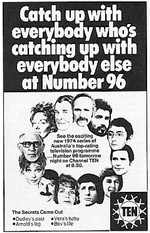
A second DVD release, including 32 episodes around the ongoing Pantyhose Strangler storyline of 1974-75, followed in September 2008 with the next batch of 32 episodes released early in 2010.
To commemorate the 40th anniversary of the show’s debut another DVD set was released, containing most of the few remaining black-and-white episodes plus the sequence of episodes surrounding the ‘bomb-blast’ storyline of 1975.
The Number 96 Home Page has all there is to know about Australia’s most infamous neighbourhood, including a complete episode guide.
Related Links:
Number 96 Home Page
Aussie Soap Archive: Number 96
Nostalgia Central: Number 96
Wikipedia: Number 96
Internet Movie Database: Number 96
